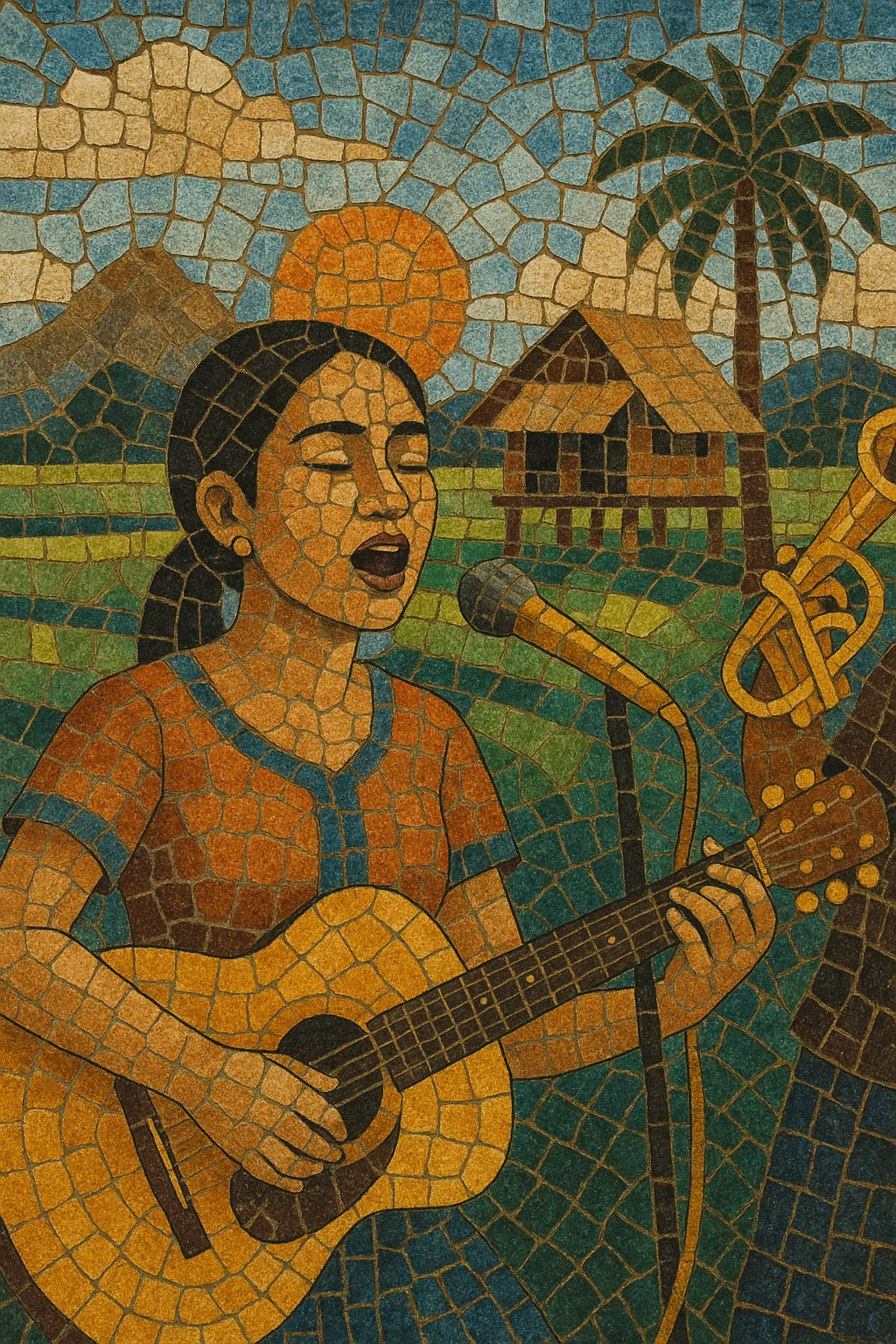Luk thung is Thailand’s rural popular music often glossed as the country’s “Thai country” style. The term literally means “child of the fields,” reflecting its deep association with migrant and agricultural life.
Stylistically, luk thung blends Thai melodic ornamentation and vocal timbre with Western big‑band, jazz, Latin, and country elements. Arrangements may feature brass, strings, electric guitar, pedal steel or accordion alongside Thai instruments like khlui (flute) or saw (fiddles). Rhythms frequently draw from cha‑cha, rumba, and slow dance forms, while lyrics focus on love, homesickness, hardship, and social commentary from a rural perspective.
The genre is distinct from its urban counterpart luk krung, favoring earthier vocal delivery, narrative lyrics, and dance‑friendly grooves that connect village festivals, radio, and modern stages.
Luk thung coalesced in the post–World War II period as rural audiences encountered Western dance bands and Thai classical traditions on radio and in traveling shows. It differentiated itself from the urbane luk krung by foregrounding rural themes, conversational storytelling, and dance rhythms that resonated with village festivities.
The 1960s brought nationwide popularity through radio, films, and variety shows. Suraphol Sombatcharoen crystallized the idiom’s emotive, narrative style, while bandleaders integrated brass, strings, and Latin grooves (cha‑cha, rumba) into Thai melodic frameworks. Luk thung’s lyrical focus on migration, love, and class realities made it a voice for the countryside during rapid urbanization.
In the 1980s, Pumpuang Duangjan modernized luk thung with disco and electronic production, expanding its dance appeal and paving the way for stadium‑scale shows with dancers and glittering costumes. Cross‑pollination with mor lam (Isan folk) intensified, and the pop industry adopted luk thung hooks, harmonies, and vocal ornaments across Thai pop and rock.
Today luk thung thrives on digital platforms, with younger stars blending EDM, hip‑hop, and pop textures while retaining rural storytelling and Thai ornamentation. Its influence threads through T‑Pop, Thai rock, and Thai hip hop, and it continues to serve as a cultural bridge between countryside identity and national popular music.


